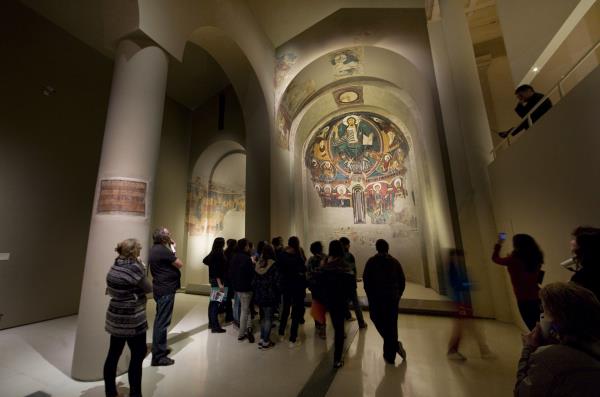
The museums find themselves, in the heart of the 21st century, in a definitively new environment which requires them to make a profound change in the way they act and relate with society. With no doubt, museums have overcome the model based on a nineteenth century conception that defined them as deposits of heritage to be catalogued, protected and exhibited.
In a global setting that has been hugely transformed and at great speed in recent years, and will continue doing so, museums face an exceptional challenge and opportunity. Required to increase their capacity to generate their own resources and to get the greatest possible attendance of visitors, these centres are competing with all types of activities and events that have nothing to do with their nature or mission. Within this context, today more than ever, museums have to be spaces of knowledge and debate, open to participation and dialogue, and oriented towards generating critical thought. Museums are always their activities and collections, and should be a unique and one-and-only places that highlight and places that value that which distinguishes them from the rest. They should be places that speak to us of themselves and at the same time, provide us with a unique vision of the world.
And it is precisely from this premise that museums should achieve their greatest possible centrality and legitimacy, being capable of influencing socially in the broadest sense of the word, always being loyal to their mission, creators of new worlds and languages, transgressors and bold in their approaches.
Museums should be able of giving value to, and managing, the totality of their collections, and to work on a much more dynamic and open concept of heritage, to make it as accessible as possible, regardless of who the owner is.
They should introduce complexity in all their projects and programmes, assuming definitively that there is not one, if not, infinite histories, audiences and stories possible. They should work even more in networks, with new partners in Africa, Asia, India, the Middle East, added to those already known in Europe or America.
They should invest much more in their own teams, who should be more multi-disciplinary, professional and skilled, and more and better integrated in the project and mission of the institution.
They should assume that they are major producers of ideas and content, of discussion platforms, and that all of this is online, in a communication of everyone with everybody, which will transform the relation with their audiences in a revolutionary way.
All in all, they should carry out a revolution in the majority of the approaches and schemes that we currently know, so as not to be static, uniform, similar to each other, isolated and rigid, based on repeated and imitated formulas, without having posed suitable questions.
For greater difficulty, everything mentioned above should be done in a setting which, in the short or medium term at least, will be seriously lacking in resources. It will therefore be key to search for a balance between getting these means and maintaining the artistic and cultural objectives so as to clearly define and distinguish the essential from the accessorial and to have more and better ideas, and a greater enthusiasm to transmit them.
From the Museu Nacional d’Art de Catalunya this is what we propose and to do so we will destine all our skills, resources and efforts.
Related link:
Strategy 2017 of the Museu Nacional (pdf)
Director del Museu Nacional







